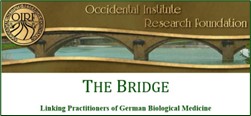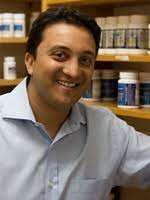To begin with I must confess, I like theories. Theories allow complex systems, once inexplicable to be conceptualized, put into a framework, ultimately to be explained and eventually understood. But theories need to be challenged.
I must also confess, I do enjoy challenging theories. If you ask a question to challenge a theory and it cannot provide a reasonable answer, it is time to modify the theory. However if you ask several questions to challenge a theory and there are no reasonable answers, it is time to change your theory.
Let’s discuss the cell membrane for example. Many scientists appreciated the discovery of a ‘thin film’ but it was the famous Theodore Schwann (1839) who described this film as ‘prior in importance to its contents’. It was thought of as an impermeable membrane that acted independent from its surroundings. Eventually, in 1928 (Mond and Amson) proposed a permeable membrane hypothesis or the sieve theory if you will.
It was not until Boyle and Conway (1941) described a seemingly important concept. The fact that certain molecules of a certain size can enter the cell via this membrane but other molecules of a larger size cannot. A cell membrane showing favoritism? They had found that Na and K ions were allowed into the cell but only Na ions were allowed out even though the Na ions were larger in size than the K ions. If there was a non-prejudiced cell membrane then both types of ions would be allowed or disallowed into the cell. However the only way that the larger Na ions were allowed out was by some kind of a channel – an exclusive channel. This idea was the dominant concept until a further problem arose. So the theory was altered. Because there is a concentration gradient across this membrane it was found that Na also permeates through, so the only alternative was to create not only membrane channels to allow some molecules in, but a membrane pump to force other molecules out. Thus the ‘pump’ was born. The ‘channel’ and ‘pump’ field exploded. Hydrogen, calcium, chloride and bicarbonate pumps were discovered and by the late 1970’s over 100 channels for various molecules were discovered.
So it would seem that a theory was proposed, modified and now is the dominant framework for what we build our concepts upon. Let’s test this theory shall we?
As with channels, pumps were ‘discovered’ to explain concentration gradients from inside to outside the cell. There are now more than 50 solute specific pumps.
However if these pumps are solute specific how does one explain specific ‘pumping out’ of molecules it has never seen before? How are antibiotics, curare and any one of the ten thousand new chemicals that are released into the environment according to the EPA which are eventually brought into the cell now selectively removed? The dominant theory suggests an adaptable pump but this seems illogical. If this were so, then why would the pump be so selective to begin with? Question one: Unanswered.
The second question is how the cell musters enough energy required to power such a pump. Several studies suggest that it might take up to 35-50% of the cell’s energy to drive the sodium pump alone!! (Whittam, 1961). If there are more than 50 pumps documented then there clearly is not enough energy that the cell can generate to perform its basic biological function as well as drive the pumps. Again the dominant theory might argue that the pumps are not in continuous use and therefore can summon energy from the cell if and when required. However since ions and solutes cross the membrane continuously (via channels) even in a resting state these molecules must need to be continuously pumped out to counteract this normal occurrence. Therefore the pump must be functional all the time. To further dominate the question, organelles such as liver cell mitochondria as well as muscle cell sarcoplasmic reticulum contain 20-50 times more membrane and thus have far, far more pumps. There is no accounting for the increased energy required. Question two: Unanswered.
Now we look at the membrane itself. “Continuous lipid bilayer” is the term often utilized by cellular biology textbooks – the so called “lipid bilayer”. The advent of the continuous phospholipid bilayer is misleading. Korn (1966) upon several experiments found that the membranes are not predominantly lipid but that of protein!. In fact the ration of protein to lipid is 3:1. In certain organelles the ratio can be as high as 5:1!! Thus, the ideal lipid bilayer membrane with the occasional protein molecule is very misleading. Because protein molecules fold upon themselves, it doesn’t lend well to the idea of a continuous non porous membrane. In fact one could argue that the membrane proteins are actually larger molecules that fold back upon themselves many times as they course through the membrane. It is not a continuous lipid bilayer membrane, but rather a reactive, ever moving, changing protein membrane that is always in response to its environment. Question three: Unanswered.
It is time to rethink the concept of cell membranes. What was once thought of as a rigid non-conforming film should now be evolved into a responsive protein membrane that has no pumps or channels but which can alter its charges from one side to the other in response, thus maintaining a dynamic equilibrium. Extra cellular quickly becomes intracellular in terms of charges. Once we recognize this, we realize how quickly we can alter the internal workings of the cell.
 An Exclusive Article for Affiliates
An Exclusive Article for Affiliates
From THE BRIDGE Newsletter of OIRF
Published June 2013
© Copyright 2013, Dr. Karim Dhanani, ON Canada



